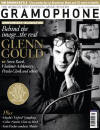Texte paru dans: / Appeared in: Code-barres / Barcode: 709861305353 |
|
|
Reviewer: Iain
Fenlon Vivaldi edition arrives at the composer’s irst known works The 12 trio sonatas that make up Vivaldi’s Op 1 are his earliest known compositions. By the time that they appeared in print, the composer had been both ordained and appointed as maestro di violino at the Ospedale della Pietà, one of four Venetian institutions devoted to the care of orphans. Probably trained as a violinist by his father, who played in the cappella of St Mark’s Basilica, it was largely for his playing that Antonio was praised at the time, and his younger contemporary, the Venetian playwright and librettist Carlo Goldoni, even went so far as to memorably describe him as a mediocre composer. A hearing of this impressive new recording from L’Estravagante should lead most of us to a contrary view. Although not as famous as Vivaldi’s Op 3, L’estro armonico, the Op 1 sonatas are remarkable for their imaginative adaption of the standard threemovement format (slow-fast-slow) by the addition of extra pieces taken from the repertory of social dances so as to create more varied structures. Stefano Molinari, the founder of the ensemble, and his fellow violinist Stefano Rossi are perfectly matched partners in a style of expressive dialogue that takes the affective possibilities of the Baroque violin to its limits. The recording gets off to a great start with Sonata No 12, a set of 20 variations on the popular theme ‘La follia’, which would have been familiar to all from Corelli’s Violin Sonata Op 5 No 12, published just a few years earlier. |
|
|
|
|
|
Cliquez l'un ou l'autre
bouton pour découvrir bien d'autres critiques de CD |
|




